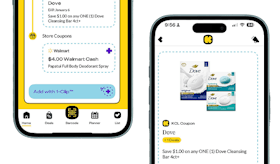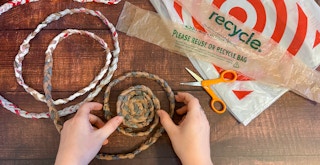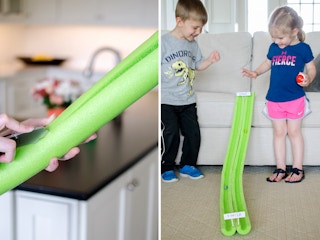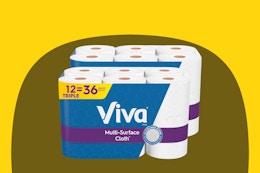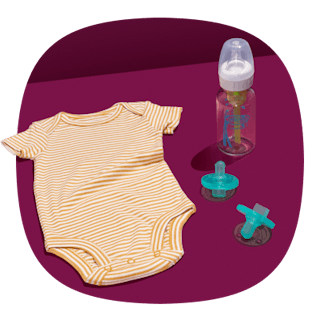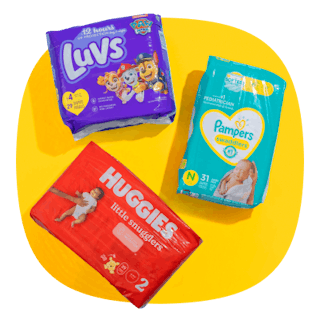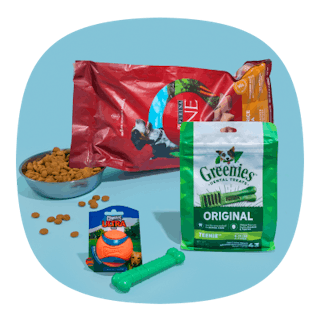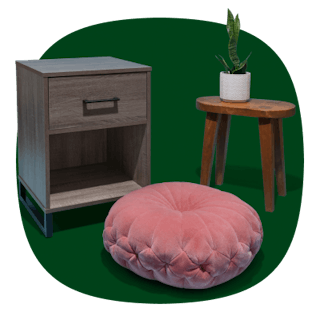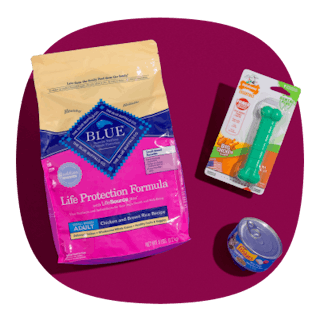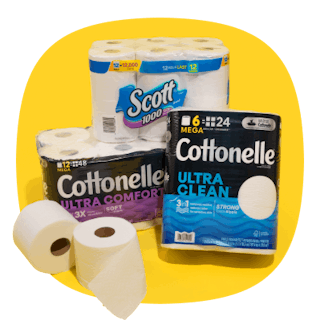Have a budding scientist on your hands? Or simply want to encourage your child to explore more STEM topics? It’s understandable why. STEM projects for kids help them understand more about the world around them. They explore science, technology, engineering, and math (where the acronym STEM comes from), all while being creative at the same time.
If you’re in the market for these types of activities, we’ve got you covered with 25 STEM projects for kids. Whether you want to cover chemistry, engineering, or environmental sciences, there are ideas here for everyone.
While almost all of them are free or close to it, that’s going to depend on which materials you have on hand. For example, a ton of these projects require popsicle or crafting sticks. If you saved some up over the summer, you might be set. But if you don’t have any on hand, you can pick them up somewhere for cheap, like Michaels.
Before we get into all these fun and creative projects, be sure to download the KCL app. We’ll keep you on top of all the best deals as you do your everyday (and educational) shopping for your family.
1. Become a NASA Citizen Scientist
Artificial Intelligence (AI) is growing in its capacities, but there are still some things best left to humans. For example, the human eye is better at spotting patterns and abnormalities in images than any computer.
For that reason, NASA runs a Citizen Scientist hub, where researchers who need to file through enormous volumes of images can work together with the public to further their research.
The best part? Kids can participate, too! Current projects include:
- Backyard Worlds: Your child can search through astronomical images to help discover new planets out beyond Neptune.
- Active Asteroids: By spotting comet-like tails on asteroids, your child can help scientists learn more about water both in space and on Earth.
- MAPPPD: Your child will count penguins in these aerial images to help track migration and fuel conservation research.
Sometimes projects run out of images, but if you circle back to them later, the scientists running the projects are usually thrilled to supply more.
2. Cloud in a Jar
In the grand scheme of STEM project for kids, this is a classic. It teaches your little ones about the states of water and cloud formation. Clouds are formed when warm water vapor meets cold temperatures, condensing. If there is dust or some other small particles for the vapor to cling onto, the condensed vapor will form water droplets around the particle, making a cloud.
You’ll need a jar, some warm water, hairspray, and ice. First pour the warm water into the jar. Then spray a small bit of hairspray into the jar, quickly placing the lid on top. Then place ice on top of the lid.
As the water vapor rises and reaches the icy cold lid, you should start to see water droplets forming around the hairspray particles. If you open the lid, your cloud will hang around for a brief minute as it leaves the jar!
3. Egg drop
Another classic! To teach this lesson about gravity, you’ll need eggs (either raw or hard-boiled depending on how brave you are about cleanup). For other materials, you can let your imagination run wild with what you have laying around the house.
Ultimately, your goal is to cushion the egg’s fall so it doesn’t break. You’ll need an external container, whether it’s an egg carton or a structure built out of popsicle sticks. Then you’ll need something soft like cotton balls or towels to place inside to protect the egg further.
Let your kids’ creativity run the experiment. The fun in it is figuring out what works and what doesn’t.
Related: 16 Money Games for Kids
4. Oil spill cleanup
STEM projects for kids should educate them how our own actions affect the environment. This experiment teaches your child just how difficult it is to clean up an oil spill. All you’ll need for this is a baking pan, water, oil, and a spoon. If you happen to have feathers in your craft kit, you can use those, too. Or you could pick some up somewhere like Michaels.
The feathers aren’t mandatory, but they can help teach your children about the consequences of oil spills to wildlife.
First put the water in the baking pan. Then add the oil (and feathers, if you so choose.) From there, it’s pretty simple! Let them try to clean the oil out of the water using the spoon or any other tools they might want to try.
They’ll quickly see how difficult of a problem it is to fix.
5. Pool noodle marble run
Lessons about gravity and engineering collide in this STEM projects for kids. To complete it, you’ll need pool noodles, a knife, sturdy tape, and some marbles.
Beforehand, have the grown-up cut the pool noodles in half lengthwise with the knife. This should create two long, open tubes your marbles can slide down. Then you can cut the long tubes into shorter runs of varying lengths.
Now hand the remaining materials over to your child! Let them use the tape to affix the pool noodles to the wall to build their own course.
They’ll get to experiment with how to place the tape to get them to stay on the wall, how steep of an angle is required to keep their marble moving from the top of the course down to the bottom, and how that angle affects the speed.
TIP: Make sure the tape isn’t too strong. You don’t want it peeling any paint off your walls when you go to clean up.
6. Crystal sun catchers
You’ve heard of crystal gardens, but have you ever seen crystal sun catchers? It’s the same idea, except instead of growing crystals in a jar, you’ll grow them between two clear, plastic lids, like the kind that comes on your ranch dressing when you order pizza.
Our favorite tutorial on this twist on a classic can be found on Babble Dabble Do.
7. DIY Catapult
Have your little engineer build their own catapult using popsicle sticks, rubber bands, and a plastic spoon.
First stack five or six popsicle sticks on top of each other. Use a rubber band on each side to bundle them together. Then,take one popsicle stick and slide it between the bottom two popsicle sticks, forming a 90 degree angle. About one-third of the stick should be sticking out the top.
Then take the plastic spoon and match up the handle with the short end of the single popsicle stick. Use another rubber band to tie them together at their bases. The spoon should be resting on top of the stacked popsicle sticks, forming an angle of 45 degrees or less with the single popsicle stick.
You have your catapult! Now just get a marshmallow or cotton ball, put it in the spoon, gently pull the spoon back, and release to launch your projectile.
8. Earthquake simulator
Even if you don’t live in an earthquake-prone area of the country, this is one of those STEM projects for kids that elicits a lot of curiosity. Using a cake pan, make a shallow dish of Jell-O. That’s going to represent the Earth’s crust.
Once it’s firm, have your child build structures out of marshmallows and toothpicks. They’re trying to build something that can withstand an earthquake.
To simulate the earthquake, you can start by tapping the side of the pan and escalate into shaking the entire thing back and forth.
If you prep multiple pans of Jell-O, you can give your child multiple attempts to figure out which structures are better suited to withstand the catastrophe and which are not.
9. Homemade seismograph
Now that your kid knows how to build for an earthquake, it might be cool to learn how to measure them, too. This is one of our favorite STEM projects for kids. To make your own DIY seismograph, you will need a shoe box, a plastic cup, a bit of yarn, a skinny marker, a few coins, and a long spool of skinny paper, which you can either buy or cut and paste together yourself.
First, turn the shoebox on its side. At the bottom, cut a slit on each side. Eventually you’ll run the paper through here along the length of the base of the box.
Then poke a small hole in the middle of the top of the box, the middle of the bottom of the cup, and either side of the top of the cup. Now take the yarn, running it through the top of the box into the top of the cup inside. Pull the yarn through the other side of the cup, then back up through the top of the box.
Adjust the string until the cup is hanging about a quarter of an inch from the bottom of the box. Then tie a thick knot to hold the suspended cup in place.
Now, stick the marker through the bottom of the cup and the paper through the slots on either side of the box. As you shake the table the box is sitting on, have your child pull the paper at a slow and even pace.
The result should be a seismogram, showing smaller lines when the shaking was less intense and larger marks when things really got going.
10. Build a clothespin airplane
We love STEM projects for kids that only need a few items. In this case, it’s just a clothespin, a few popsicle sticks, a pony bead, and a hot glue gun.
There are lots of ways your child can experiment and get creative with this project, both artistically and as they attempt to engineer the most aerodynamic structure. You can get some inspiration over at STEAMsational.
11. Make magnetic slime
I’m going to be really real with you on this one: you can make your own magnetic slime, but the materials are probably going to cost more than just buying a kit from National Geographic.
Either way, it’s one of the coolest STEM projects for kids. You can use a magnet to pull the slime in different directions after you’ve infused it with iron oxide powder.
12. Direct your own stop motion animation film
To make a stop motion animation film, all you’ll need is a steady background, toys, and a smartphone or tablet. You keep the camera and background fixed, and then move the toys across the scenery.
In each shot, you move the toy across the screen just a little bit before snapping your next picture. After you’ve gotten the entire scene, you stitch these images together in rapid succession. It’ll look like a movie a la Gumby or Rudolph the Red-Nosed Reindeer.
13. Learn to code
There are a ton of sites out there that will teach your child beginner coding skills for free. Perfect for the child who is interested in tech or something like video game design!
One of our favorites is Hour of Code.
14. DIY Solar Oven
Bake your own s’mores or other treats with you very own DIY solar oven. To make this project, your child will need a box with a lid, an X-acto knife, tin foil, plastic wrap, tape, and a stick.
In the top of the box lid, cut a 3-sided rectangular flap. Then wrap the inside of the box with the tin foil. Separately, wrap the inside of the flap with tin foil. Now, pull the plastic wrap tightly over the opening in the top of the box lid and tape it in place.
Finally, use a twig or small stick to prop the flap up at an angle of less than 45 degrees. Sunlight should reflect off the tin foil and through your plastic window to heat up the inside of the box. Stick your s’mores inside until they’re all cooked and gooey and ready to eat!
TIP: It can take anywhere from 30 to 60 minutes to cook s’mores. The long cook times are why a marshmallow-based snack is recommended.
15. Make circuitry into a game
This one is a little more involved, but so is any activity that includes electricity. Essentially, you hook up a battery pack and a buzzer to a wand and an art piece, both made of copper wire. Your child can make their art into whatever shape they like, as long as it’s a single line. For example, they might make an outline of a heart or a cloud or a dog.
Then once you’ve built the electric art piece, you carefully try to move the wand along that copper wire outline without actually touching it. If the two do touch, the buzzer will go off!
You can get the full tutorial at Left Brain Craft Brain.
16. Build a popsicle stick bridge
Challenge your child to build a bridge out of popsicle sticks. Then drive a matchbox car over it!
If the first model doesn’t hold up, you can look up structurally sound designs online, teaching your child a bit about engineering and architecture.
17. Recycle your own paper
The sad truth is, a lot of the stuff that we put in our recycle bins doesn’t actually end up getting recycled. You can save the junk you put through your shredder from the dump by recycling it yourself at home. It’s one of those simple enough STEM projects for kids that you can do at home.
Take your shredded paper and put it in a bowl of hot water. Let it sit for three to four hours. The water will cool down as you wait.
While you wait, get a piece of cheesecloth and lay it beneath an empty picture frame. Underneath that, you can put a towel or another cloth to catch any mess.
When it’s ready, stir your paper until it forms a goop. Then pour that goop inside the empty picture frame on top of the cheesecloth. Pat it down flat with another towel.
Allow it to dry overnight or until it’s 100% dry. When you remove the frame, you’ll have a rectangular piece of paper you made yourself!
18. Plant a butterfly garden
The monarch butterfly is endangered, but scientists are studying them to see if they can help. You can join the effort with Monarch Watch.
Monarch Watch is a large-scale science project that helps raise, tag, release, and ultimately gather data on monarchs, their migration patterns, and their mortality rates. If you want to raise butterflies, you can order kits for $18 every spring.
Alternatively, you can grow a milkweed garden to help the efforts. Monarchs love milkweeds, so your garden can give them a place to stop along their route. It’s not expensive to grow, but if you’re an educational institution or willing to make that argument for your homeschool efforts, Monarch Watch will send you everything you need to set up your garden for free.
19. Buoyancy and DIY boats
Have your child gather materials from around the house that were headed for the garbage or recycle bin. Then have them make boats out of various items. (Just make sure there’s something in there that will actually float, like plastic from a laundry detergent bottle or a pool noodle.)
Have your child hypothesize about what will float and what won’t. Then fill up the tub with water to put their hypotheses to the test!
20. Shadowplay
Want big fun without a big mess? Have your child build a tower that touches the ceiling while only being a few inches tall.
First, have your child get some blocks. Ideally these will be smaller, like counting blocks, but any blocks will do. Have them build a few “towers” that are just one to five blocks tall.
Next, grab a flashlight and turn out the lights. Have your child shine the light from behind the blocks onto the wall. Encourage them to keep adjusting the angle of the light until the shadows of their towers reach the ceiling.
21. Make your own lava lamp
It’s simpler than you may think! While regular lava lamps are powered by heat, yours will run on alka seltzer power, or carbonation. This opens up an opportunity to talk about how the carbon dioxide is released into the water and how oil and water don’t mix.
First, fill a jar half full with water. Mix in food coloring of your choice.
Next, fill the remaining part of the jar with whatever cooking oil you have on hand. Wait for the oil and water to settle and separate.
Finally, drop the alka seltzer into the mixture to get your lava lamp effect.
22. Rubber egg experiment
Have you ever made a rubber egg? It’s super simple and one of the few 2-ingredient STEM projects for kids. If you fill a cup with vinegar and gently set an egg inside, the shell will dissolve and the innards will congeal if you leave it overnight.
This is because the shell contains calcium carbonate. When it interacts with the vinegar, it creates carbon dioxide and dissolves the shell. If you were to watch long enough, you’d see bubbles of carbon dioxide rising to the top of your vinegar as this process happens.
The end result is a rubbery, shell-less egg. Let your child have a blast playing and experimenting with it, but prepare them for the fact that once they’ve stressed it enough, it will burst.
23. Upcycle plastic bags

Same deal with paper, a lot of the things we think will be recycled end up in the dump. Instead, you can repurpose plastic shopping bags into new usable items via kid-friendly crafts. You can talk about the consequences of plastic bags in our garbage dumps, rivers, and oceans to really bring the STEM point home.
There are so many projects you can do. Here are some of our favorites:
- Weave your plastic bags into a basket.
- Turn your plastic bags into yarn, which you can then use to crochet projects like hats and (reusable) handbags.
- Upcycle your plastic bags into cute Halloween decorations.
- Fuse plastic bags into coasters.
24. Make a robotic face
This tutorial from Curiosity Machine can be as simple or as complicated as you want. No matter how complex you decide to take things, at the end, you’ll have a robotic face built entirely by your kiddo themselves.
25. Build a baking soda volcano
An oldie but a goodie! First get a plastic bottle. Then get some modeling clay or playdough and form it around the bottle in the shape of a volcano. When it’s dry, you can paint it brown.
Then fill the bottle about halfway with vinegar. Mix together some baking soda and red Jell-O in a bowl. Finally, using a funnel, pour your baking soda mix into the bottle for a red lava explosion!
What are your favorite STEM experiments for kids? Leave them in the comments or tag The Krazy Coupon Lady on social media!
Download the KCL app to add and redeem coupons in store
